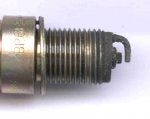I adjusted my cam shims and later was fiddling with the webber to balance the engine.
I discovered that when I pull 1 plug wire at a time
No 1 cylinder, the engine rpm drop somewhat
No 2 cylinder the engine rpm didnt drop all that much
No 3 cylinder the engine rpm drop quite a bit engine sputter a little
No 4 cylinder engine rpm drop a little.
So what does this mean? That eg No 2 is not doing much work and therefore I should increase the idle screw adjustment?
No 3 is doing alot of the work for the rest of the engine and I should leave it alone or adjust it down so that I can increase No 1 and 4?
Is this how I can interprete this?? Is this how to get all cylinder to do similar amount of work at idle? My car at idle is a little like a massage chair on low setting so I want to iron it out as much as I can.
I did what papajam described sometime back about pulling the front 2 plug wires then the back 2 wires and adjust the balance so that the 2 halves of the engine are balance.
But in view of the fact that each cylinder seems to be doing different amount of work, how do I balance it? Can I use this pull one plug wire technique to balance the whole engine?
I discovered that when I pull 1 plug wire at a time
No 1 cylinder, the engine rpm drop somewhat
No 2 cylinder the engine rpm didnt drop all that much
No 3 cylinder the engine rpm drop quite a bit engine sputter a little
No 4 cylinder engine rpm drop a little.
So what does this mean? That eg No 2 is not doing much work and therefore I should increase the idle screw adjustment?
No 3 is doing alot of the work for the rest of the engine and I should leave it alone or adjust it down so that I can increase No 1 and 4?
Is this how I can interprete this?? Is this how to get all cylinder to do similar amount of work at idle? My car at idle is a little like a massage chair on low setting so I want to iron it out as much as I can.
I did what papajam described sometime back about pulling the front 2 plug wires then the back 2 wires and adjust the balance so that the 2 halves of the engine are balance.
But in view of the fact that each cylinder seems to be doing different amount of work, how do I balance it? Can I use this pull one plug wire technique to balance the whole engine?









